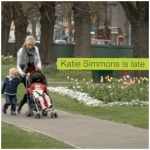Why an advertising complaint is no bad thing for charities
A marketing treat arrived in my inbox yesterday with Civil Society’s latest update. Two charity advertising campaigns have made the ASA (Advertising Standards Authority) top 10 complaints of all time list. And rather than wring my hands and worry, I say ‘hurrah’ and ‘well done’ to both charities.
Here’s why.
There are plenty of studies which suggest that much advertising exposure – which these days means campaigns across multiple media and not just one-off page adverts – is lost on the audience it’s meant to target. This isn’t rocket science but in my experience, it’s not because advertising is a bad medium or because campaigns are poorly executed (although poor execution can totally kill results). To a significant extent it’s due to the fact that there are so many messages vying for our attention, all day, every day.
Advertisement
Therefore the first battle that any campaign has to win is to achieve cut-through and actually get noticed by the target audience. Generating complaints is a good measure of the fact that a campaign is getting noticed – particularly if you have generated hundreds of them like Marie Stopes (1088 complaints for their pregnancy advice campaign) and Barnardo’s (840 complaints for their domestic abuse campaign)… 
We also have to recognise that there are complaints and there are complaints. By default, these two campaigns touched on subjects that some people were never going to agree with and possibly be offended by. The complaints we should be concerned about are those that suggest we might have over-stepped the mark with audiences who would have acted in support of our campaign; not from those who would never have supported us anyway.
Secondly, when the complaints are registered with the ASA, they generate follow-up coverage in sector press, across multiple web forums, via social media networks and often national media titles – particularly if they’re looking for an ‘outrageous’ story. This subsequent coverage often gives the organisations concerned the opportunity to explain their position and turn around any negative perceptions – as in these examples.
Thirdly, the ASA publishes its lists of complaints each year as well as specials like the feature above, so both Barnado’s and Marie Stopes are still generating coverage well after their respective campaigns have ended – along with the positive explanations behind the campaigns’ motivations. 
Lastly, charities can get away with this far more readily than commercial organisations. If we generate complaints, we are given opportunities in national and sector media to explain ourselves, apologise if necessary and put across the case for why the campaign focused on the area of need that it did.
I’m not suggesting we launch reckless campaigns or deliberately set out to offend the public audience as this is both crass and too obvious a technique to be of any use. But I know from experience that if the complaints derive from a misunderstanding or a minority held view, then the extra coverage and campaign mileage generated will make a positive difference to the awareness of your cause.
In my second marketing job, the Director actually targeted me to generate at least one campaign per year that got referred to the ASA to prove that we were pushing as hard as possible to get our message across. How would your organisation react to these kind of complaints?



